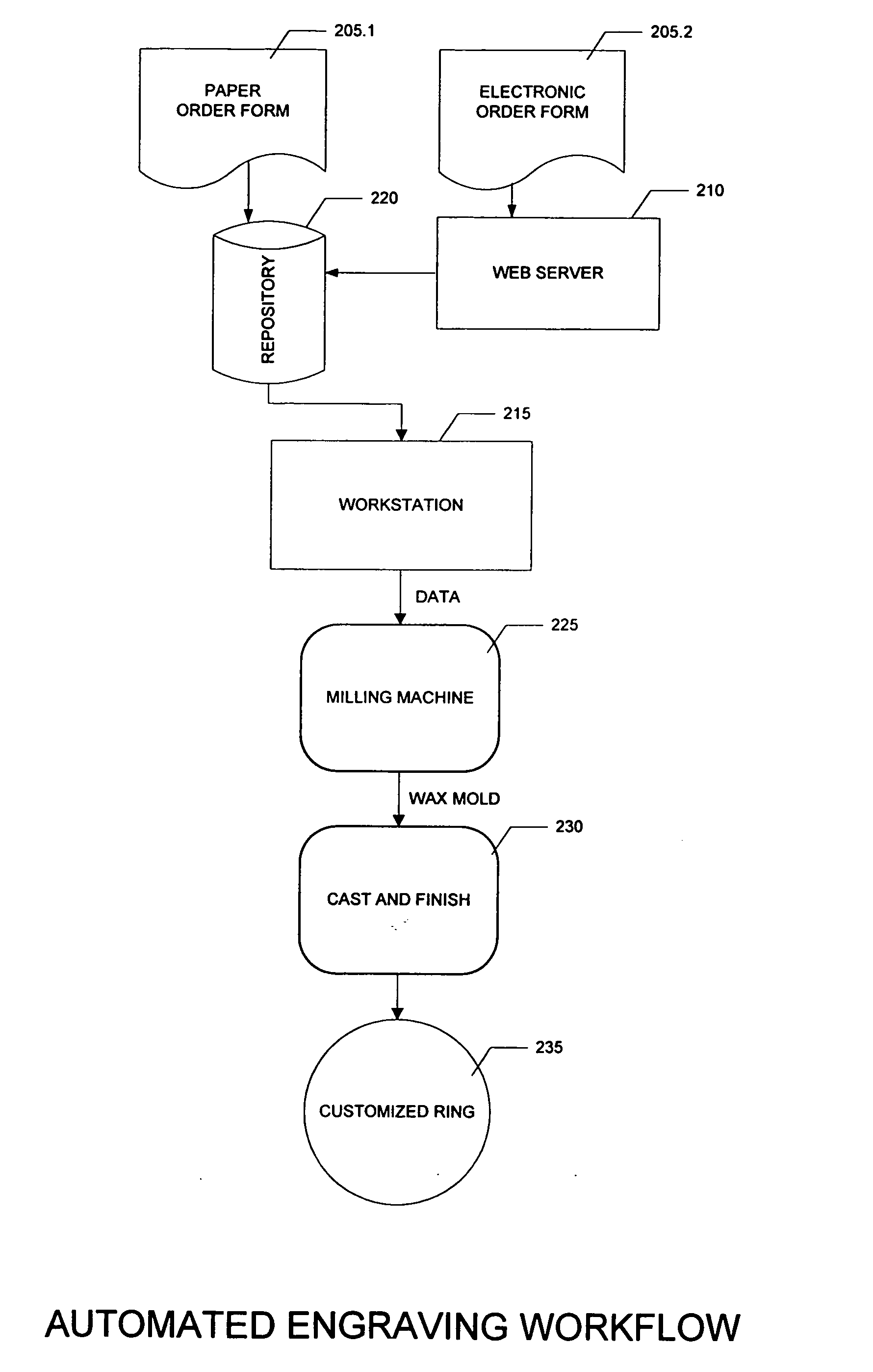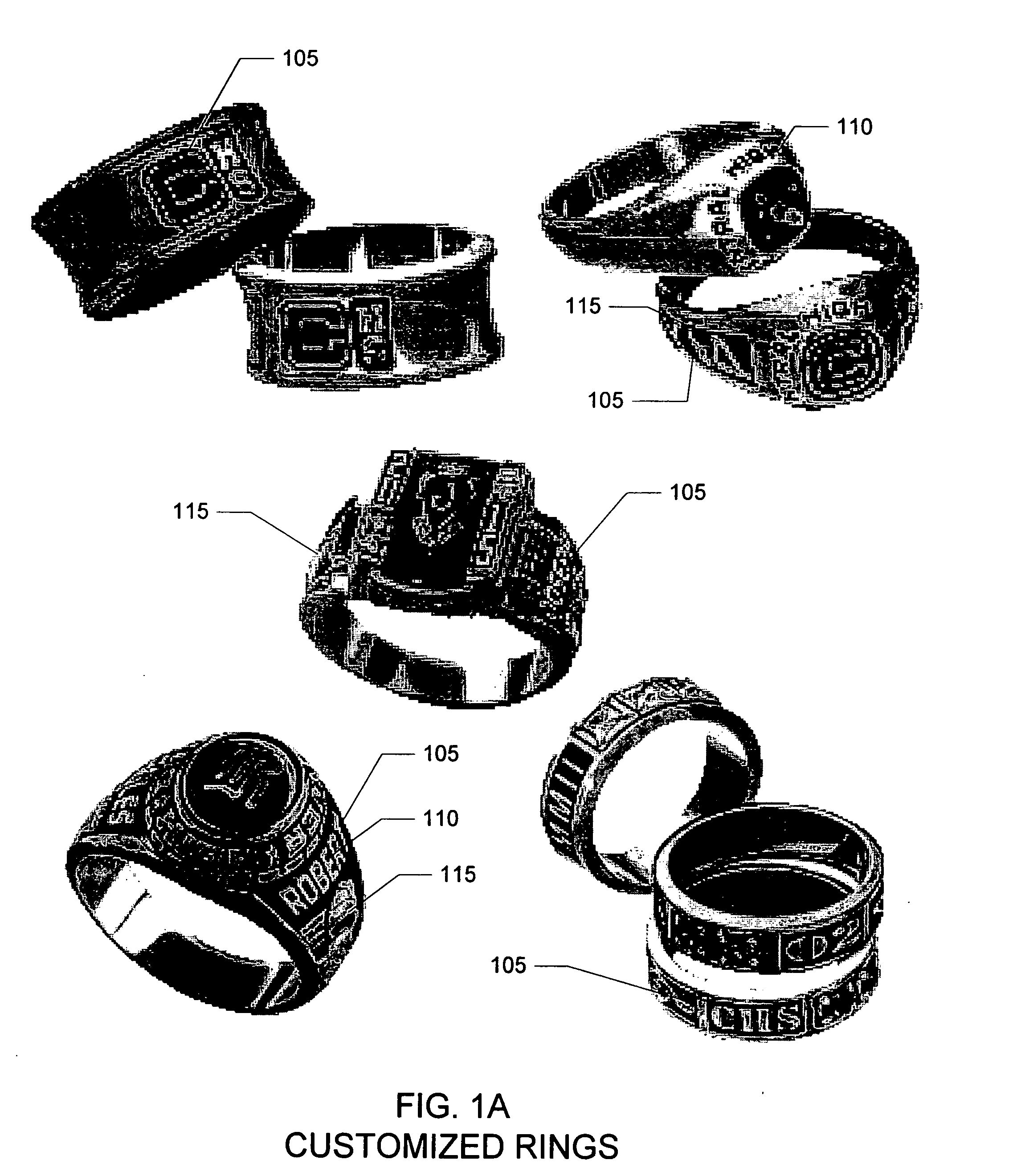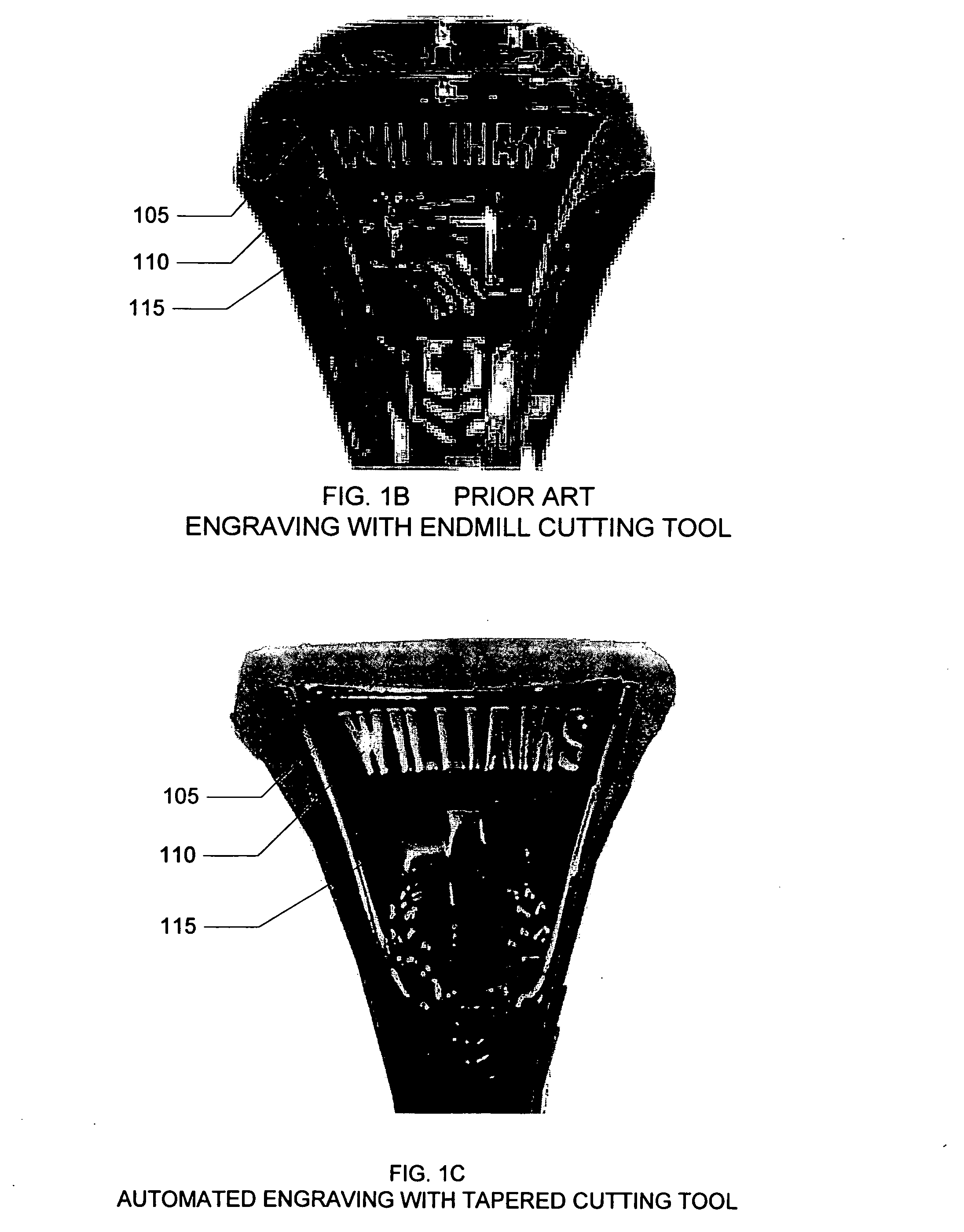Automated engraving of a customized jewelry item
a jewelry item and automatic engraving technology, applied in the field of personalized items, can solve the problems of more delicate tools being used to achieve more intricate artwork, less precious metal, and much softer wax than metal, so as to reduce the amount of precious metal lost, reduce the need for expensive cutting tools, and reduce the effect of cos
- Summary
- Abstract
- Description
- Claims
- Application Information
AI Technical Summary
Benefits of technology
Problems solved by technology
Method used
Image
Examples
Embodiment Construction
[0021] Referring to FIGS. 1A, 1B and 1C, a collection of personalized rings are shown. These rings each have one or more panels 105, which are regions on the ring that can each be personalized by the student purchaser. Each panel 105 can include text 110, a design 115, or both.
[0022]FIG. 2 is a workflow diagram illustrating the use of one embodiment of the present invention. As shown in the figure, orders are captured by various channels. For example, student consumers may fill out an on-line electronic order form 205.2 that is submitted to a web server 210 for storage in a database 220. Or, as has been traditionally done, students and their parents may fill out paper-based order forms 205.1 that are turned into a sales representative. Each sales rep may forward a set of order forms to the manufacturer's data entry department, where a group of data entry clerks enter the orders into a computer repository database 220. There are other order channels available, such as by using an IV...
PUM
 Login to View More
Login to View More Abstract
Description
Claims
Application Information
 Login to View More
Login to View More - R&D
- Intellectual Property
- Life Sciences
- Materials
- Tech Scout
- Unparalleled Data Quality
- Higher Quality Content
- 60% Fewer Hallucinations
Browse by: Latest US Patents, China's latest patents, Technical Efficacy Thesaurus, Application Domain, Technology Topic, Popular Technical Reports.
© 2025 PatSnap. All rights reserved.Legal|Privacy policy|Modern Slavery Act Transparency Statement|Sitemap|About US| Contact US: help@patsnap.com



